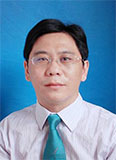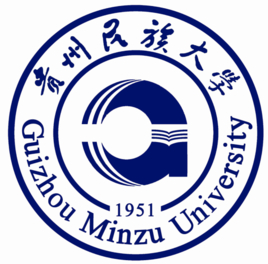Keynote Speakers/主讲嘉宾
Keynote Speakers/主讲嘉宾

Prof. Qizhou Hu (Chairman)
Nanjing University of Science and Technology, China
Research Area: Transportation engineering
Introduction:
PhD supervisor, Doctor of Southeast University, Postdoctoral fellow of Tsinghua University, Visiting Scholar of the University of Hong Kong, Director of Nanjing University of Science and Technology High-Speed Railway Science Institute, Distinguished Professor of Henan University of Technology, Young and Middle-aged Academic Leader of "Qing Lan Project" in Jiangsu University, Winner of the provincial "Six Peak Talents" high-level talent project, the editorial board of the European Journal of International Transportation Engineering. The doctoral dissertation was awarded the outstanding doctoral dissertation of Jiangsu Province and the outstanding doctoral dissertation of Southeast University. Currently, he is mainly engaged in transportation engineering research.
In recent years, he has undertaken more than 30 national, provincial and ministerial scientific research projects, including hosting a Program of the National Natural Science Foundation of China, a Program of the China Postdoctoral Science Foundation, a National Statistics Bureau Research Scientific Project, a Project of the Ministry of education of Humanities and Social Science, a National Railway Administration Scientific Research Project. a Key Science and Technology Project of Henan, more than 10 Jiangsu Province Local Standard Projects, participated in a number of topics including 2 National 863 Projects and 4 National Science and Technology Support Projects. He has published more than 80 papers at major domestic and international academic journals and international conferences, published 6 monographs, edited 3 textbooks and 5 popular science books, and obtained more than 10 invention patents, won 2 provincial and ministerial awards.
Title: Thoughts on bicycle traffic in Europe
Abstract: Bicycle is a kind of "low-carbon transportation, green travel, happy life, physical fitness" means of transportation, it has: flexible and convenient, no energy consumption, no pollution, strong adaptability, good health and other characteristics. Especially in recent years, people's demand for bicycle traffic has been increasing. Both developed countries and developing countries in Europe are exploring new ways to build bicycle expressways which are open to cyclists. The evolution of means of transportation from "four wheels" to "two wheels" is, in a sense, a revolution in the concept of transportation. Therefore, the study of bicycle expressway has important theoretical significance and practical value. In the comprehensive analysis of the development trend of bicycle traffic in European countries, this paper analyzes the successful road of European bicycle development.

A. Prof./Dr. Baohua Guo
Henan Polytechnic University, China
Research Area: Rock mechanics in Road Engineering, Road safety and congestion control
Research Exprience:
Baohua Guo is an associate professor in the Department of traffic engineering at Henan Polytechnic University. He is a visiting scholar in rock mechanics at West Virginia University(2009). He has more than 20 years of professional experience in the field of Rock mechanics in Road Engineering, Road safety and congestion control. His doctoral dissertation was awarded the outstanding doctoral dissertation of Henan Province and the outstanding doctoral dissertation of Henan Polytechnic University. In recent years, he has undertaken more than 20 government and enterprise scientific research projects, including hosting a Program of the National Natural Science Foundation of China and a Key Science and Technology Project of Henan Province, and obtained more than 10 invention patents. He has published 2 books and more than 50 academic papers in the scientific journals in the field of Rock mechanics in Road Engineering, Road safety and congestion control. He was invited to be the reviewer of more than 10 SCI/EI journals in rock mechanics, earth environment and transportation safety. He is a member of China Hgihway and Transportation Sociaty,ISRM,the Youth Work Committee of Chinese Society for Rock Mechanics and Engineering and the Underground space branch of Chinese Society for Rock Mechanics and Engineering. He was the organizing committee of the 3rd International Conference on Traffic Engineering and Transportation System (ICTETS).

A. Prof. Shaopeng Zhong
Dalian University of Technology, China
Research Area: Land use and transportation integration planning and modelling, transportation economics, and intelligent transportation
Research Exprience:
Shaopeng Zhong is an associate professor in School of Transportation and Logistics at Dalian University of Technology and the Deputy Director of the Traffic Engineering Laboratory. He is a visiting scholar in urban and regional planning at University of North Carolina at Chapel Hill (2008-2010). He is a guest professor at Technical University of Denmark (2017-2018).
He has more than 20 years of professional experience in the field of land use and transportation integration planning and modelling, transportation economics, and intelligent transportation. He has written and published two books and more than thirty scientific papers in the top journals in the field of transportation planning, such as Transportation Research Part A, Journal of Transport Geography, Computers, Environment and Urban Systems, Journal of Transportation Engineering-ASCE, IET Intelligent Transport Systems, and Journal of Transport and Land Use. He was invited to be the reviewer of more than 18 SCI/SSCI journals in urban transportation, planning, environment, geography.
He is a member of China Intelligent Transportation Systems Association Youth Expert Committee. He is the lead guest editor of the Journal of Transport and Land Use (SSCI index), editorial board member of Transportation Letters: The International Journal of Transportation Research (SCI/SSCI index) and Transportation Management. He is the chairman of the urban planning and travel behavior technical committee of the World Transport Convention. He is the organizing committee and scientific committee of several international conferences, such as International Workshop on Integrated Land Use and Transport Modeling (ILUTM), 6th International Symposium on Travel Demand Management (TDM), Transportation Research Congress (WRC), The 2017 International Conference on Economic Development and Management Engineering (EDME).
Title: Exploring the joint effect of shared autonomous vehicles and congestion pricing on regional job accessibility
Abstract: Most of the existing research on shared autonomous vehicles (SAVs) and road congestion pricing studies their short-term impact on traffic flow. This kind of studies focus on the influences on mobility and ignore their long-term impact on regional job accessibility. In view of this, from the perspective of land use and transportation integration, this study explored the long-term effect of SAVs and cordon-based congestion pricing on regional land use, transportation, and job accessibility. The contributions of this study are summarized in the following three aspects. First, this study is the first attempt to identify the long-term impact of the combination of these two technologies on regional job accessibility. Second, different from the previous research methodology, this study adopted the land use and transportation integrated model (TRANUS model) and scenario planning to ensure the comprehensiveness and validity of the results. Third, this study analyzed the spatial heterogeneity of the impact of the combination of the two technologies on regional job accessibility in different areas with different built environment attributes. To realize this purpose, this study quantitatively classified traffic analysis zones (TAZs) using data mining technology, i.e., factor analysis and clustering analysis. Results show that the introduction of SAVs will contribute to the job and population development in the charging zone and reduce the negative effect of road congestion pricing. From the perspective of reducing the average travel time between TAZs, the best strategy is to implement SAVs alone, followed by the integrated use of SAVs and road congestion pricing, while the worst strategy is to implement the cordon-based congestion pricing policy alone. By comparison, from the perspective of improving the regional job accessibility, the effect of introducing SAVs is better than that of road congestion pricing, while the combination of these two technologies is not superior to implementing SAVs alone.

A. Prof./Dr. Law Teik Hua
Road Safety Research Center, Engineering Faculty, Universiti Putra Malaysia, Malaysia
Research Area: Road Safety, Public Transprt Analysis and Traffic Engineering
Research Exprience:
Education
• Ph.D. Road Safety Engineering, 2009, Imperial College London, U.K. (Dissertation: The effects of political governance, policy measures and economic on the Kuznets relationship in motor vehicle Crash deaths)
• M.S. Road Safety Engineering, 1998, Universiti Putra Malaysia.
• B. S. Statistic, 1996, Universiti Putra Malaysia.
Professional Qualification/ Membeship/ Affiliation
• Member, Road Traffic Injury Research Network, Global Forum for Health Research, World Health Organization
• Member, Eastern Asia Society for Transportation Studies, Japan
• Member, IRAP-International Road Assessment Program
• Member, The International Association of Engineers
Title: Development of safety performance index for intercity buses: An exploratory factor analysis approach
Abstract: In recent years in Malaysia, severe road crashes involving intercity buses have been increasing. With increased public concerns about intercity bus safety, effectively managing travel risk has become critical for both intercity bus operators and road safety policy makers. Intercity bus drivers are generally at a higher risk for crashes due to long hours of driving and exposure to different road conditions. Therefore, understanding and quantifying their risks and taking steps to manage them could improve intercity bus safety. The aim of this study is to establish a safety performance index for each risk domain to measure and compare intercity bus safety in terms of risk factors. The risk domains considered in this study were road environment conditions, bus driver driving behaviors and bus safety conditions. The weighted indicators were aggregated into the safety performance index for each risk domain was done using the Exploratory Factor Analysis method. The paired sample t-test was then applied to determine which safety performance indices were significantly different from each other. The results indicate that road environment conditions have contributed more to intercity bus safety risks on the east coast than on the west coast of peninsular Malaysia. The evidence presented in this study shows that different intercity bus companies showed mixed safety performance in different risk domains. Therefore, we suggest the development of targeted road safety programs for each intercity bus company to address intercity bus safety problems.






